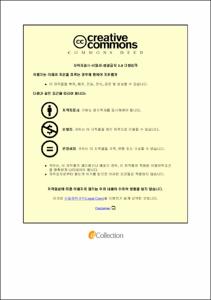한국어와 베트남어의 시간표현
- Abstract
- The goal of this study was to analyse and compare the mistakes Vietnamese learners of Korean language frequently make when using Korean morpheme -었- and Vietnamese particle đã. The morpheme -었- does not only indicate the basic past tense, but depending on the context, its meaning and function may differ. Similarly, Vietnamese particle đã can take on different meanings and functions in a sentence. That is why language learners experience difficulties acquiring its meanings and correct usage. In order to make learning easier for Korean language learners of Vietnamese origin, similarities and differences the morpheme -었- and particle đã have been analysed and presented.
This study is composed of the following content. In the first chapter, the importance and the goal of the study, research methodology and discussion organization, as well as the previous literature are presented.
The analysis in the second chapter was focused on Korean tenses, as well as the meaning, function, and characteristics of the morpheme -었-. The analysis results confirmed that the morpheme -었- has three functions, namely that it can be used for the basic past tense, completion, and future state.
The third chapter examines the concepts of Vietnamese temporal expressions and tenses in Vietnamese, and analyses three meanings and functions of the particle đã in earnest. According to results, the first function of the particle đã is to express the completion in past, and past experiences. Secondly, the present state of completion, the present state occurrence, and the progress to date appeared. Thirdly, it can also indicate the future state. Furthermore, examining the characteristics and limitations of the particle đã, it was confirmed that when Vietnamese temporal adverbs appear in a sentence, the verb does not express the tense.
In the fourth chapter, the similarities and the differences between the morpheme -었- and the particle đã were analysed and compared in earnest. Then, the similarities and differences between Korean and Vietnamese temporal adverbs were contrasted.
The focus of the fifth chapter was on mistakes that Korean language learners of Vietnamese origin frequently make due to the interference of the mother tongue. Examining the errors in tense usage revealed that reasons and causes are in the difference of the native language. This was addressed in bilingual publications “Mad, Dad, and Multicultural Country, an Old Story” (“엄마.아빠 나라 다문화, 옛날이야기”) and “Mom and Dad’s Country” (“엄마.아빠의 나라”), where the necessity to use Vietnamese expression đã was examined in sentences in which Korean morpheme -었- was used. Furthermore, in order to investigate the accuracy of the actual language use of Vietnamese learners, a survey was conducted to find out whether they could select the correct expressions by presenting 14 simple sentences, in which Korean morpheme -었- should be used. The survey results confirmed that even with the higher Korean ability level, Vietnamese learners of Korean language tend to continuously make mistakes regarding the usage of tenses, due to the interference of the mother tongue.
Finally, in the sixth chapter previous content was summarized and conclusions were drawn. This study shows the reasons why Vietnamese learners of Korean language make frequent mistakes in temporal expressions, and indicates the necessity for related follow-up study in the future.
- Issued Date
- 2017
- Awarded Date
- 2017. 8
- Type
- Dissertation
- Publisher
- 부경대학교
- Affiliation
- 부경대학교 대학원
- Department
- 대학원 국어국문학과
- Advisor
- 김희섭
- Table Of Contents
- Ⅰ. 서론 1
1. 연구 목적 및 필요성 1
2. 연구방법 및 논의 구성 4
3. 선행연구 5
Ⅱ. 한국어의 시간 표현 10
1. 한국어의 시제 개념 10
2. 한국어의 상 19
Ⅲ. 베트남어의 시간 표현 21
1. 베트남어 시간 표현 개념 21
2. 시간 부사어(Time Adverbial) 유형 41
3. 베트남어의 상의 실현 양상 43
Ⅳ. 한국어와 베트남어 시간 표현 대조 45
1. 과거 시간 표현과 상으로서의 ‘-었-’과 ‘đã’의 대조 45
2. 한국어와 베트남어의 시간부사 대조 50
Ⅴ. 형태소 ‘-었-’과 허사 ‘đã’의 오류분석 및 해결책 53
1. 베트남인 한국어 학습자의 한국어 시제 오류 54
2. 양국어로 번역된 텍스트에 나타난 문장 분석 및 문제점 56
3. 베트남인 한국어 학습자의 시제 선택 설문 65
4. ‘-었-’과 ‘đã’의 번역에 관한 유의점 73
Ⅵ. 결론 74
참고문헌
- Degree
- Master
- Files in This Item:
-
-
Download
 한국어와 베트남어의 시간표현.pdf
기타 데이터 / 769.74 kB / Adobe PDF
한국어와 베트남어의 시간표현.pdf
기타 데이터 / 769.74 kB / Adobe PDF
-
Items in Repository are protected by copyright, with all rights reserved, unless otherwise indicated.